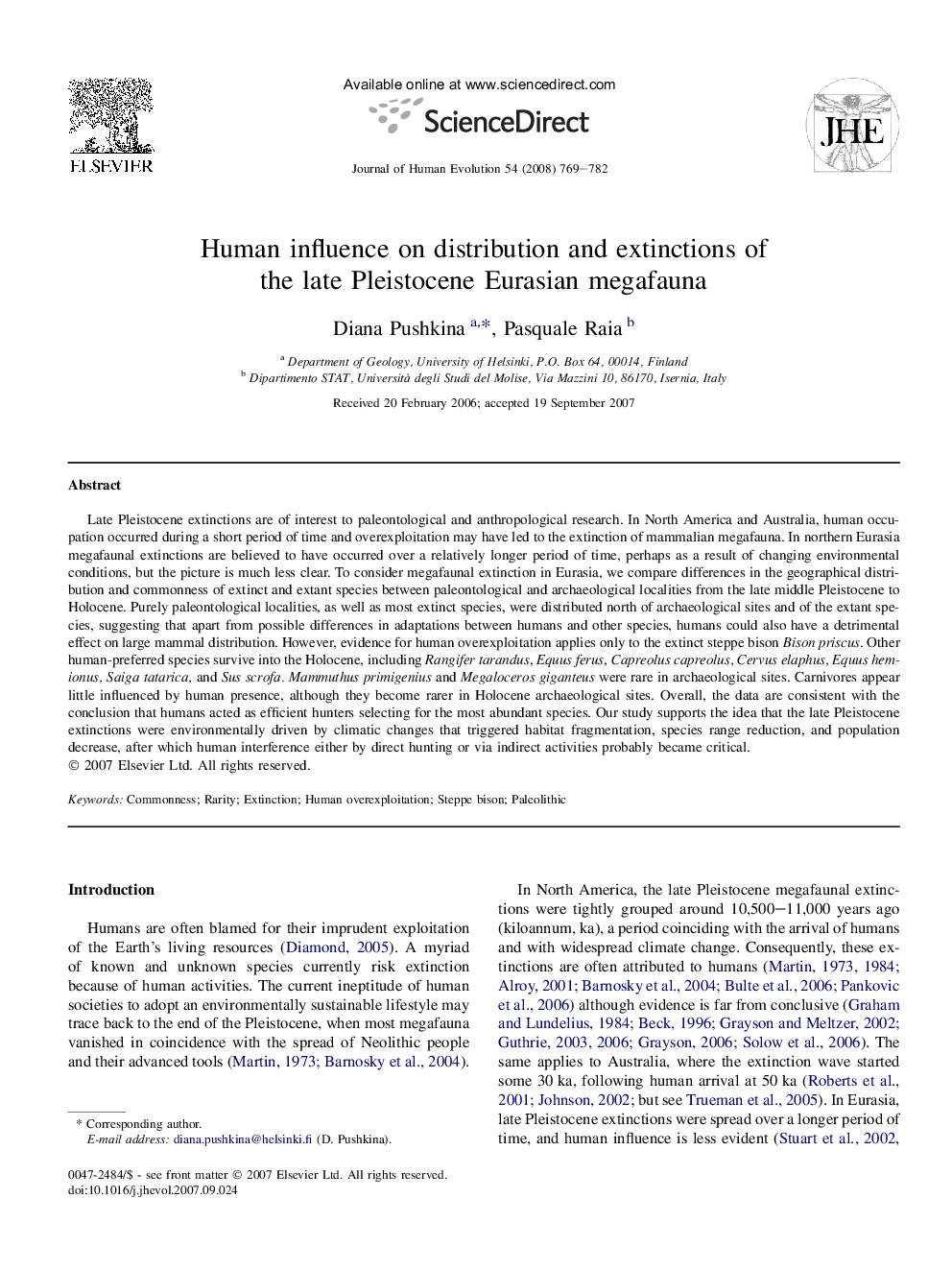| کد مقاله | کد نشریه | سال انتشار | مقاله انگلیسی | نسخه تمام متن |
|---|---|---|---|---|
| 4557123 | 1329528 | 2008 | 14 صفحه PDF | دانلود رایگان |

Late Pleistocene extinctions are of interest to paleontological and anthropological research. In North America and Australia, human occupation occurred during a short period of time and overexploitation may have led to the extinction of mammalian megafauna. In northern Eurasia megafaunal extinctions are believed to have occurred over a relatively longer period of time, perhaps as a result of changing environmental conditions, but the picture is much less clear. To consider megafaunal extinction in Eurasia, we compare differences in the geographical distribution and commonness of extinct and extant species between paleontological and archaeological localities from the late middle Pleistocene to Holocene. Purely paleontological localities, as well as most extinct species, were distributed north of archaeological sites and of the extant species, suggesting that apart from possible differences in adaptations between humans and other species, humans could also have a detrimental effect on large mammal distribution. However, evidence for human overexploitation applies only to the extinct steppe bison Bison priscus. Other human-preferred species survive into the Holocene, including Rangifer tarandus, Equus ferus, Capreolus capreolus, Cervus elaphus, Equus hemionus, Saiga tatarica, and Sus scrofa. Mammuthus primigenius and Megaloceros giganteus were rare in archaeological sites. Carnivores appear little influenced by human presence, although they become rarer in Holocene archaeological sites. Overall, the data are consistent with the conclusion that humans acted as efficient hunters selecting for the most abundant species. Our study supports the idea that the late Pleistocene extinctions were environmentally driven by climatic changes that triggered habitat fragmentation, species range reduction, and population decrease, after which human interference either by direct hunting or via indirect activities probably became critical.
Journal: Journal of Human Evolution - Volume 54, Issue 6, June 2008, Pages 769–782